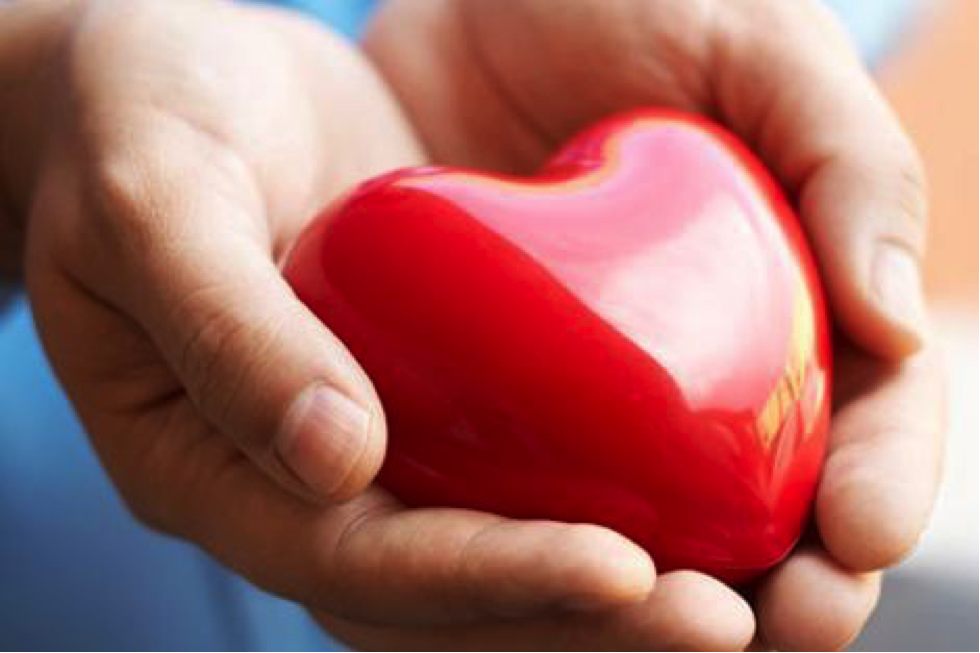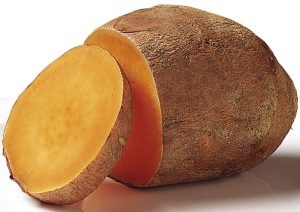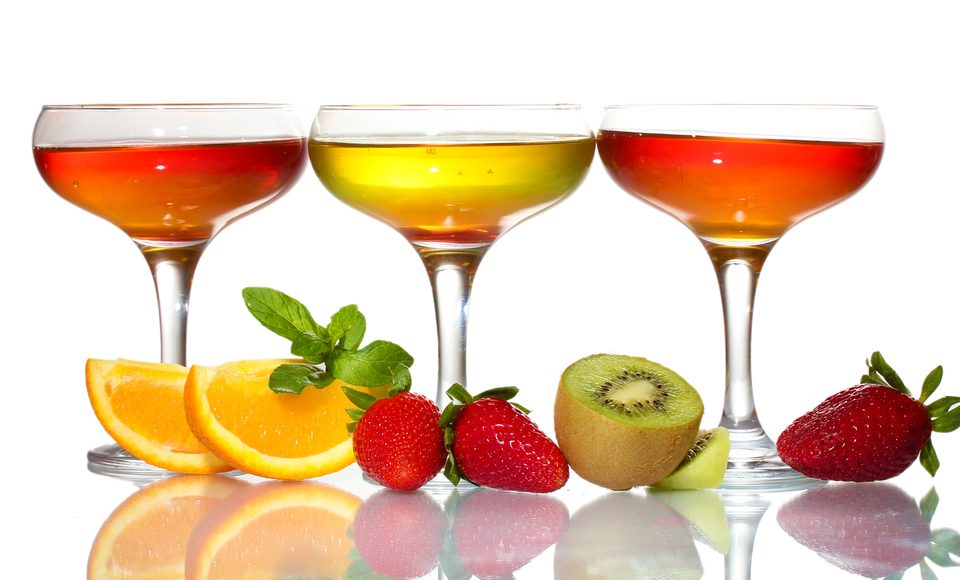Have you been wondering about goiters, and what exactly goitrogens are? They are super important for when you are trying to keep your health in mind, and that’s why I have put together this comprehensive guide to all things goitrogenic. If you have ever heard that broccoli is bad for your thyroid, than this guide is going to be right up your alley.
- Have any questions?
- 480-631-7837
- support@in-goodhealth.com

How To Choose The Best Herbs For Your Adrenals
March 30, 2017
The 4 Biggest Concerns With Grave’s Disease You NEED To Know
April 13, 2017
How To Choose The Best Herbs For Your Adrenals
March 30, 2017
The 4 Biggest Concerns With Grave’s Disease You NEED To Know
April 13, 2017Home > Hormone Reset > A Comprehensive Guide To Goitrogens and Hashimoto’s
A Comprehensive Guide To Goitrogens and Hashimoto’s

What is a Goiter?

A goiter is a diffuse, even enlargement of the thyroid gland. As you might be able to notice from the image above, sometimes goiters can be quite large and noticeable.
Goiters have a way of finding themselves in large populations1, and it really highlights this potential danger of “eating local,” let’s call it. Depending on where you live, your food might lack iodine fortification – this is especially prevalent if you live in a city far away from the ocean. Foods that are rich in iodine do not grow as generously, and they can simply be harder to find.
Take the “Goiter Belt” for instance. This was an area around the Great Lakes where children who were iodine deficient actually had started developing goiters2. It was all due to the fact that what they were eating did not contain iodine, due to their geographical location and the scarce availability of food that was fortified with iodine.
What’s the problem with goiters?
A goiter is a large amount of swelling in a vital area of the body, so it makes sense that it’s not only uncomfortable to look at, but it definitely hurts. It can also make it difficult to speak or swallow, as well. Worst of all, they can also hide and contain thyroid cancer.
In Conclusion: Goiters are no fun to have at all! They can hurt, they can make normal tasks uncomfortable, and they could also lead to cancers down the road.
What causes goiters?
When we talk about goiters, we have to talk about root causes. In the United States, Hashimoto’s thyroiditis is the most common cause of goiters3. Also, Graves’ disease and toxic nodular goiter can be a cause, too.
Key Insight: Iodine deficiency is nowadays more of a problem for the developing parts of the world, as it relates to goiters, and is more about Hashimoto’s in the developed parts of the globe.
This is the overall paradox when it comes to thinking about iodine in our systems. In order to remedy our iodine deficiency, in the 1920’s, foods were fortified with iodine. The problem is that this led us to uncovering Hashimoto’s – which is now the most common way that we developed the goiters we thought we got rid of by treating our iodine deficiency.
Iodine: too little is bad, and so is too much, and even a responsible change can be dangerous for certain segments of the population. That balance is so delicate, and it is just as important that we keep this in mind moving forward.
So, What is a goitrogen?
A goitrogen, very simply, is anything that can worsen the growth of goiters.
There is some discussion about the concept of antigoitrogens, but right now they are more theoretical than practical. They might include:
- Statins – with no overall benefit, it’s best to avoid these4
- Casein – the effects are small, and it might have an adverse effect on those with thyroid disease5
- Vitamin E, C and beta carotene – a good idea for your diet, and a little bit in multivitamins6
Back to goitrogens, though, so what do they do exactly? They can:
- Block iodine absorption
- Raise TSH levels
- Increase thyroid autoimmunity
Generally, goitrogens are worse in areas with a selenium deficiency, as well.
In Conclusion: Goitrogens can trigger and cause goiters to grow. They do this by blocking iodine absorption, raising our TSH levels and increasing our thyroid autoimmunity. Want to avoid goiters? Avoid goitrogens.
Where can I find goitrogens?
There are various sources where we can find goitrogens, so let’s dive deep and figure out where we can find them:
Chemicals

There are two distinct chemicals where we can find goitrogens:
- Perchlorate – found in soil and some foods, and
- Thiocyanates – found in tobacco
Medications
There are also medications which can be goitrogenic, such as:
- Amiodarone – a high concentrate of iodine, and a huge host of side effects
- Lithium – blocks thyroid hormones
- Phenytoin, Carbamazepine, Rifampin – all shown to have effects acting as goitrogens in the body

What types of food have goitrogens?
This comes down to one big question that I hear time and time again: can I eat broccoli? That’s something that we will definitely come to, but we have to cover a few more things before we can get there.
Isoflavones
An important term that I want you to know is isoflavones7. This is something we can find mostly in unfermented soy foods, like:
- Tofu
- Soy protein powder
- Texturized vegetable protein (TVP)
- Soy milk
Isoflavones work primarily in worsening thyroid autoimmunity. They are not so much dealing with iodine absorption, as they are with this autoimmunity problem. That is especially important when we think about Hashimoto’s disease.
But what else do they do?
Here is where we have to introduce a little wrinkle. It is that soy foods actually can benefit our bodies, overall. Soy foods have shown that they can lower our risk of:
- Mortality8
- Cancer – specifically breast cancer9
- Heart disease10
So, what do you do?
Well, you take action steps! There are three things I want you to focus on when it comes to the potentially dangerous goitrogens in soy products, while balancing out the positive effects that they can have on your body overall:
- Avoid at the same time that you are taking thyroid medications
- Avoid GMO soy, unfermented soy products and soy supplements
- Go with non-GMO, fermented, organic soy – like miso, wheat-free tamari, tempeh and natto (seriously fermented, with serious flavour!)
Isothiocyanates
This is going to be the next big category of food-based goitrogens. These are the ones that you might be able to find in broccoli, so if you have been waiting for me to cover this top, here it comes. Isothiocyanates can actually be found in all cruciferous vegetables and those in the genus brassica.
This covers quite a lot of foods, for example:
- Arugula
- Broccoli
- Broccoli Sprouts
- Broccolini
- Cabbage
- Canola
- Cauliflower
- Chinese cabbage
- Collard greens
- Horseradish
- Kale
- Kohlrabi
- Mustard greens
- Radishes
- Rapini
- Rutabagas
- Turnips
- Watercress
We can find it in so many foods, but how does it work? Isothiocyanates do work by slowing down iodine absorption, and they are actually inactivated by cooking.
What else do they do?
They actually have been shown to fight most hormonal cancers – like breast and prostate11. They are also excellent, overall, for detoxing your body.
So what do you do?
If you have Hashimoto’s disease, and goiters, I would not eat more than a pound of these foods a day raw. Cooked is harmless, in any quantity, so we want to make sure that we are keeping an eye only on the raw types of these foods that we are putting into our bodies. Apart from having an actual goiter, it is not a problem to have any of these raw, either.
Key Insight: 1 pound of these types of vegetables is a lot, but we do not want to push it. Make sure you are always adding some variety into your diet, and embrace the concept of cooking (as opposed to always enjoying things raw).
Goitrogenic Flavonoids/Flavones

There is not a lot of relevance to foods which have these goitrogenic flavones and flavonoids, because we eat them anyways, but this is a comprehensive guide so it is important that we know about them too.
These actually work by blocking the formation of thyroid hormones by inhibiting thyroid peroxidase (TPO). We can find them in foods like:
- Sweet potatoes
- Pears
- Cassava
- Pine Nuts
- Flax seeds
- Lima beans
- Millet
- Strawberries
- Spinach
- Bamboo shoots
With these foods, they are either infrequent enough (or exotic enough) that we will not find them as often in our diets, or they are processed in a way which no longer make them threatening, or they are not present enough (in quantity) in our diets for them to pose a real threat to our health.
The only special case we have is millet. The amount is relevant, even in cooked forms, and it can vary wildly from batch to batch. If you have had it before, though, that is really not too much of a problem.

Dealing with goiters?
So, we learned today that broccoli is actually fine! When we think about goiters, though, make sure that you are always aware of the structure of your thyroid (Read: How to test your thyroid, the definitive guide ). Personally, I think this is something that is too often neglected in medicine. We need to have a really good understanding of our thyroid, and that comes from examining our thyroid in all sorts of ways.
If you feel like you have anything that looks, or feels, the least bit unusual. Make sure that you seek help today. Get an ultrasound, and don’t guess – test! A structurally healthy thyroid is often a functionally healthy thyroid, and it can go so far to benefit our overall health. You need to feel good about your thyroid to feel good overall.
Take the Thyroid Quiz today!
Do you know the state of your thyroid? Please stay on top of your health, it is so important. Take the thyroid quiz today, and do what is best for your body.
1 – https://www.ncbi.nlm.nih.gov/books/NBK285569/
2 – https://www.ncbi.nlm.nih.gov/pmc/articles/PMC3509517/
3 – https://academic.oup.com/bmb/article/99/1/39/298307/The-epidemiology-of-thyroid-disease
4 – https://www.ncbi.nlm.nih.gov/pubmed/17666090
5 – https://www.ncbi.nlm.nih.gov/pubmed/1036649
6 – https://www.ncbi.nlm.nih.gov/pubmed/9582512
7 – https://www.ncbi.nlm.nih.gov/pubmed/12060828
8 – https://www.ncbi.nlm.nih.gov/pubmed/24958613
9 – https://www.mdanderson.org/publications/focused-on-health/september-2014/soy-cancer.html
10 – https://www.everydayhealth.com/high-cholesterol/diet/the-skinny-on-soy-for-high-cholesterol/
11 – https://www.cancer.gov/about-cancer/causes-prevention/risk/diet/cruciferous-vegetables-fact-sheet

P.S. Whenever you are ready, here is how I can help you now:
- Schedule a Thyroid Second Opinion with me, Dr. C, Click Here for Details
- Need help to choose supplements? Click ‘Help Me Decide Here'
- Get my top books Here
Dr. Alan Glen Christianson (Dr. C) is a Naturopathic Endocrinologist and the author of The NY Times bestselling Hormone Healing Cookbook, The Metabolism Reset Diet, and The Thyroid Reset Diet.
Dr. C’s gift for figuring out what works has helped hundreds of thousands reverse thyroid disease, heal their adrenals, and lose weight naturally. Learn more about the surprising story that started his quest.







